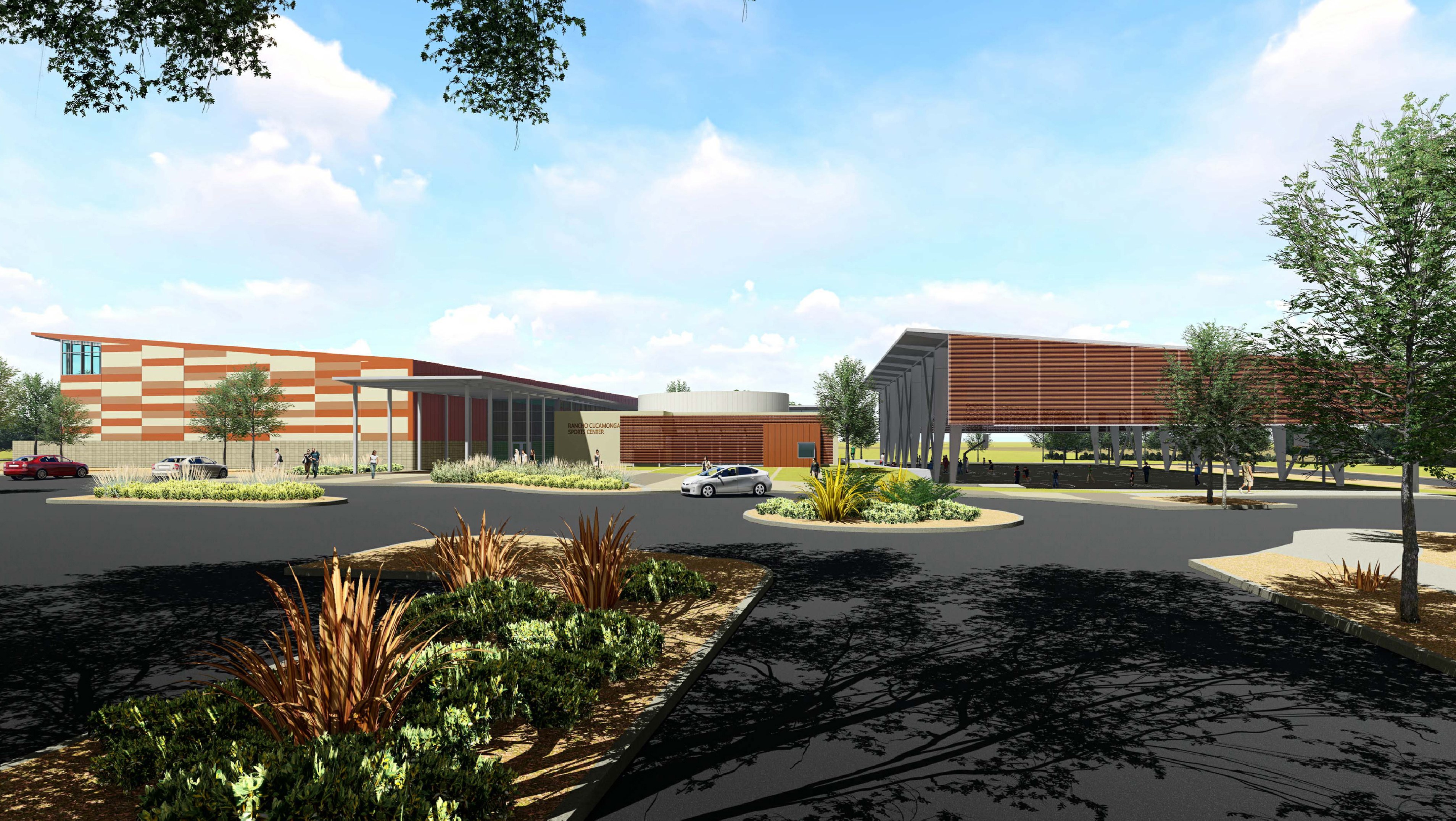For more than two decades, the Epicenter complex has been a hub for outdoor sports in the city, housing the Rancho Cucamonga Quakes minor league baseball team, three softball fields and a Little League field.
It’s about to get a lot bigger.
A year from now, the sports core will grow to include a new $13.1 million city-owned sports complex, which will house three indoor multi-use courts, three outdoor multi-use courts, office space for city staff, concessions and a multipurpose room.
City leaders gathered Tuesday morning to celebrate the groundbreaking for the future RC Sports Center at the city-owned parking lot across from LoanMart Field.
When complete, the current sports complex will move from a retail center in the 900 block of San Bernardino Road into a 55,000-square-foot development.
The design includes the 35,000-square-foot main building and a 20,000-square-foot covered pavilion for the three outdoor courts.
Staff began exploring options for a new location when the city realized the lease for the San Bernardino Road center was set to expire in 2017.
“The infrastructure is already here, the city owns the property, and so at the end of the day it was a huge savings to the taxpayers that we all serve diligently,” Mayor Dennis Michael said.
Back in 1997, when the 34,000-square-foot sports center opened, the city had no indoor basketball courts. Today the RC Family Sports Center is the headquarters for the city’s Community Services Department and offers a host of youth and adult sports activities to more than 130,000 annual visitors.
“We have had 2 million visitors in the past 20 years utilize that facility,” Michael said. The visitors have included the Sacramento Kings’ Darren Collison and former San Antonio Spurs forward Jeffrey Ayers — when they were young.
“You can tell how important that is as a value to our residents that enjoy community services programs that we provide,” Michael said.
That value to residents comes at a cost. The city pays $350,000 a year for the lease, $213,000 in annual operational costs and more than $70,000 in utilities, according to a city staff report.
It simply wasn’t financially feasible for Rancho Cucamonga to keep renting the current facility, Councilwoman Lynne Kennedy said.
The new complex “provides a sports area for our community. Before the sports center was off the main road and in a commercial part. This now creates an atmosphere where it just speaks sports,” Kennedy said. “It’s more centrally located.”
Rancho Cucamonga had estimated the project would cost between $14 million and $15 million.
“As bids came within the budget, that allowed us to do the whole complex,” said Councilman Sam Spagnolo, referring to the decision to enclose the outdoor courts. “It’s going to be a great asset.”
City leaders initially had hoped to finalize the design plans by August 2016 and break ground by October 2016.
Rancho Cucamonga had expected to move in by December because the lease expires in November. But additional design time pushed back the grand opening, city spokeswoman Francie Palmer said.
To bridge the end of the lease to an expected spring 2018 completion date, the city will extend the current contract and go month-to-month, she said.
“The city put a lot of forethought in how this building will evolve. It wasn’t just built for today. It’s been designed for the evolution down the road,” said Zachary Mueting, principal landscape architect with RJM Design Group, the architecture firm for the project.
For example, if the city chooses to add solar panels, the structure has been designed to handle the additional weight, he said.
Larry Mouri with RJM Design Group and the lead designer for the project, said the pre-engineered metal building gives Rancho Cucamonga the ability to enclose the pavilion, which would allow the city to increase its programming.
Opting for a pre-engineered metal building saved Rancho Cucamonga about $900,000 to $1 million, said John Hughes, vice president of operations for Griffin Structures Inc. Hughes is managing the construction site for the city, and partnered with RJM during the design process.
In addition, a backup generator planned for the facility will allow it to serve as a shelter in the event of an emergency, Hughes said.
“They added a second layer of protection to the design where they are bringing natural gas service to the generator so that it can run continually on natural gas, if there was a major event,” Hughes said. “They really had a lot of forethought.”
